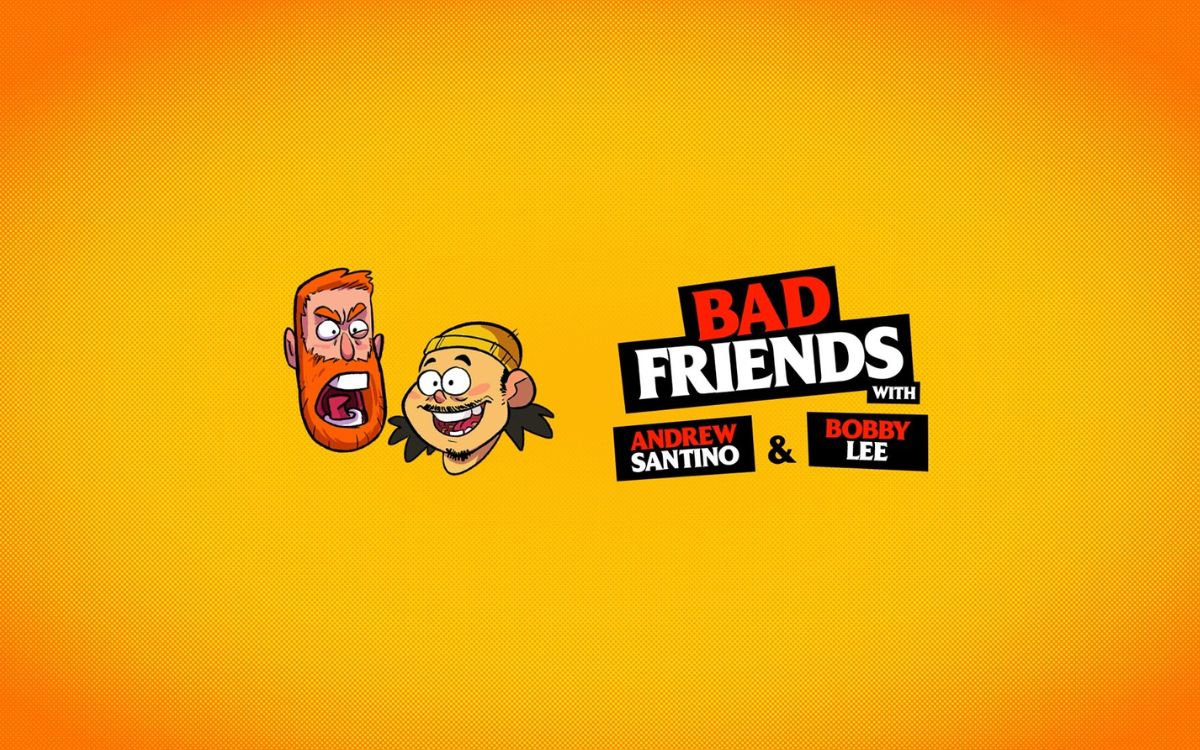Home>Events & Info>Podcast>How To Make An RSS Feed For A Podcast


Podcast
How To Make An RSS Feed For A Podcast
Modified: January 22, 2024
Learn how to create an RSS feed for your podcast and reach a wider audience. Discover the key steps and tools to optimize your podcast feed.
(Many of the links in this article redirect to a specific reviewed product. Your purchase of these products through affiliate links helps to generate commission for AudioLover.com, at no extra cost. Learn more)
Table of Contents
- Introduction
- Understanding RSS Feeds
- Why Create an RSS Feed for a Podcast?
- Step 1: Setting up a Hosting Platform
- Step 2: Preparing Your Podcast Files
- Step 3: Creating the RSS Feed File
- Step 4: Adding Podcast Metadata
- Step 5: Including Episode Details
- Step 6: Validating and Testing the RSS Feed
- Step 7: Submitting Your RSS Feed to Directories
- Conclusion
Introduction
Podcasts have become increasingly popular over the years, with millions of people tuning in to listen to their favorite shows. As a podcaster, it’s important to make your content easily accessible to your audience. One of the best ways to achieve this is by creating an RSS feed for your podcast.
An RSS (Really Simple Syndication) feed is an XML-based format that allows users to subscribe to regularly updated content. It provides a convenient way for listeners to automatically receive new episodes of your podcast as soon as they are released.
Creating an RSS feed may seem daunting, especially for those who are not familiar with coding or technical aspects. However, with a step-by-step approach and the right tools, anyone can successfully create an RSS feed for their podcast.
In this article, we will guide you through the process of creating an RSS feed for your podcast. We will cover everything from setting up a hosting platform to submitting your feed to podcast directories. By the end of this guide, you will be equipped with the knowledge and resources to efficiently distribute your podcast and reach a wider audience.
So, whether you’re a seasoned podcaster looking to optimize your distribution or a newbie stepping into the podcasting world, let’s dive into the details of creating an RSS feed for your podcast.
Understanding RSS Feeds
Before we dive into the process of creating an RSS feed for your podcast, it’s important to have a basic understanding of what an RSS feed is and how it functions.
An RSS feed is a standardized format for delivering regularly updated web content, such as news articles, blog posts, and podcast episodes. It allows users to subscribe to the content they’re interested in and receive updates automatically.
At its core, an RSS feed is an XML file that contains metadata and a list of items or entries. In the case of a podcast, each entry represents an episode, consisting of information like the episode title, description, duration, publication date, and audio file URL.
Podcast RSS feeds follow a specific structure, utilizing tags like <title>, <description>, <pubDate>, and <enclosure> to organize and present the information within the feed.
In order for podcast aggregators and directories (e.g., Apple Podcasts, Spotify) to discover, index, and display your podcast, it’s crucial to have a properly structured and valid RSS feed. This ensures that your episodes are accurately represented and delivered to your audience.
As a podcaster, you can manually create and maintain your RSS feed using a text editor or a specialized RSS feed generator. Alternatively, many podcast hosting platforms provide built-in tools and templates to simplify the process of creating and managing your podcast’s RSS feed.
Now that we have a grasp of what an RSS feed is and why it’s important for your podcast, let’s move on to the next section, where we will explore the benefits of creating an RSS feed for your podcast.
Why Create an RSS Feed for a Podcast?
Before the advent of RSS feeds, podcasters had to rely on listeners manually downloading each episode or sending out email notifications. However, with the rise of podcast directories and aggregators, having a dedicated RSS feed for your podcast offers numerous benefits:
- Easy and Convenient Subscription: With an RSS feed, listeners can subscribe to your podcast with just a few clicks. They don’t need to remember to check for new episodes or visit your website regularly. Instead, the feed automates the process, delivering new episodes directly to their preferred podcast app or platform.
- Better Visibility and Discoverability: Podcast directories and aggregators rely on RSS feeds to index and display podcasts to potential listeners. By providing a properly formatted RSS feed, your podcast becomes more visible and discoverable to a wider audience. This can lead to increased listenership and brand exposure.
- Consistent Branding and Presentation: By controlling your podcast’s RSS feed, you can ensure that your brand identity is consistently represented across platforms. You can customize the metadata, episode details, and artwork to create a cohesive and professional image for your podcast.
- Analytics and Insights: Many podcast hosting platforms offer analytics and insights that are tied to your RSS feed. You can track metrics like the number of subscribers, episode downloads, and listener engagement. This data can help you understand your audience better and make informed decisions to optimize your podcast strategy.
- Easy Distribution and Syndication: Having an RSS feed simplifies the process of distributing your podcast to various platforms and directories. Instead of manually submitting your episodes individually to each platform, you can submit your RSS feed once and have your episodes automatically distributed to different podcast directories.
Overall, creating an RSS feed for your podcast streamlines the distribution process, increases visibility, and enhances the listener experience. It allows you to focus on creating quality content while reaching a wider audience.
Now that we understand the benefits of having an RSS feed for your podcast, let’s move on to the step-by-step process of creating one.
Step 1: Setting up a Hosting Platform
Before you can create an RSS feed for your podcast, you need a reliable hosting platform that will store and distribute your podcast episodes. A podcast hosting platform provides the infrastructure and tools necessary to manage your podcast’s audio files, generate an RSS feed, and distribute your episodes to various podcast directories.
When choosing a hosting platform, consider the following factors:
- Storage Space: Ensure that the platform provides adequate storage space to accommodate your podcast episodes. Consider the size and frequency of your episodes to estimate your storage needs.
- Bandwidth: Look for a hosting platform that offers sufficient bandwidth to handle the number of downloads and streams your podcast is projected to receive. A limited bandwidth may result in slower episode delivery or additional costs.
- Reliability and Uptime: Make sure the hosting platform has a track record of reliability and high uptime to ensure your podcast is always accessible to listeners.
- Analytics and Monetization: Consider whether the hosting platform provides analytics tools to track your podcast’s performance and audience engagement. Additionally, some platforms offer monetization options, such as integrating ads into your episodes.
- Integration with Podcast Directories: Check if the hosting platform allows for easy integration with popular podcast directories like Apple Podcasts, Spotify, Google Podcasts, and others. This streamlines the process of submitting your podcast and ensures your episodes reach a wider audience.
Once you’ve chosen a hosting platform, sign up for an account and familiarize yourself with the platform’s interface and features. Most hosting platforms provide step-by-step guides on how to set up and manage your podcast, including generating an RSS feed.
Remember to keep your hosting account login credentials secure, as they are essential for managing your episodes and making changes to your RSS feed in the future.
Now that you have your hosting platform in place, let’s move on to the next step: preparing your podcast files.
Step 2: Preparing Your Podcast Files
Once you have chosen a hosting platform for your podcast, it’s time to prepare your podcast files before creating the RSS feed. Here are the key steps you need to follow:
- Recording and Editing: Create compelling and high-quality audio content for your podcast episodes. Invest in a good microphone and audio editing software to ensure professional sound quality.
- File Formats: Save your podcast episodes in a widely supported audio format, such as MP3. This format strikes a balance between sound quality and file size, ensuring faster downloads for your listeners.
- Naming Conventions: Use descriptive and consistent naming conventions for your podcast episodes. Include relevant information like episode number, title, and guest names if applicable. This helps your audience easily identify and search for specific episodes.
- File Metadata: Fill in metadata tags for each episode. This includes information like the episode title, description, duration, and artwork. Metadata provides context and helps search engines and podcast directories categorize and display your episodes correctly.
- Show Notes: Prepare detailed show notes for each episode. These can include a summary of the episode, timestamps for different segments, links to resources mentioned, and any other relevant information. Show notes enhance the listener experience and can also improve SEO for your podcast website.
- Create Album Artwork: Design eye-catching and professional artwork that represents your podcast. The artwork should conform to the recommended dimensions and format for podcast cover art (typically 1400 x 1400 pixels in JPG or PNG format).
It’s important to maintain a consistent file structure and naming convention for your podcast episodes. This will make it easier to organize and manage your files as your podcast grows.
Now that you have your podcast files ready, it’s time to move on to the next step: creating the RSS feed file.
Step 3: Creating the RSS Feed File
Now that you have your podcast files prepared, it’s time to create the RSS feed file that will serve as the backbone of your podcast distribution. The RSS feed is an XML file that contains all the necessary metadata and links to your podcast episodes.
Here’s how you can create the RSS feed file:
- Choose an RSS Feed Generator: There are several tools available online that can assist you in generating an RSS feed file for your podcast. Some popular options include FeedBurner, Libsyn, Podbean, and Anchor. Choose a tool that suits your needs and familiarity.
- Template or Custom Configuration: Depending on the chosen RSS feed generator, you may have the option to start with a template or configure the feed from scratch. Using a template can save time, but if you prefer more control over the feed’s structure, opt for a custom configuration.
- Provide General Podcast Information: In the RSS feed file, provide general information about your podcast, such as the title, description, language, and explicit content designation (if applicable). These details help podcast directories accurately categorize and display your podcast.
- Add Episode Metadata: For each episode, add metadata such as the episode title, description, publication date, duration, and the URL or file path for the audio file. This information enables podcast directories to properly index and present your episodes.
- Including Enclosures: For each episode, ensure that you include the enclosure tag, which specifies the URL and file type of the episode’s audio file. This allows podcast directories to accurately retrieve and deliver your episodes to listeners.
- Validate the RSS Feed: After creating the RSS feed file, it’s crucial to validate it to ensure it adheres to the RSS format specifications and is error-free. You can use validators like the W3C Feed Validation Service to check for any issues or inconsistencies.
Take your time to review and double-check the RSS feed file before proceeding to the next steps. Any mistakes or inaccuracies in the feed file can lead to problems with episode distribution or inaccurate display in podcast directories.
Once you have created and validated the RSS feed file, it’s time to move on to the next step: adding podcast metadata.
Step 4: Adding Podcast Metadata
Now that you have created the RSS feed file, it’s important to enhance it with relevant podcast metadata. Metadata provides additional information about your podcast and its episodes, allowing for better organization and presentation in podcast directories.
Here are the key metadata elements you should include:
- Podcast Title: Provide a concise and descriptive title for your podcast. This should accurately represent the content and theme of your show.
- Podcast Description: Write a compelling and informative description that summarizes your podcast. It should give potential listeners a clear idea of what your podcast is about and what they can expect from it.
- Podcast Artwork: Include the URL or file path for your podcast’s artwork. This should be a high-quality image that represents your brand or podcast theme. Follow the recommended dimensions and format guidelines of the podcast directories.
- Podcast Author: Provide the name or names of the individuals or organization behind the podcast. This helps listeners identify who is responsible for the content.
- Podcast Website URL: Include the URL of your podcast’s official website or a landing page where listeners can find more information about your show and access additional resources.
- Podcast Categories: Choose relevant categories that accurately represent the genre and content of your podcast. This helps listeners discover your podcast when browsing through specific categories or topics.
- Podcast Keywords: Include relevant keywords or tags that describe the topics covered in your podcast. These keywords can help improve the visibility of your podcast in search results within podcast directories.
Ensure that the metadata you provide is accurate and up-to-date. This information will be used by podcast directories to categorize and display your podcast, so it’s important to effectively communicate your podcast’s unique selling points and attract potential listeners.
Once you have added the podcast metadata to your RSS feed file, it’s time to move on to the next step: including episode details.
Step 5: Including Episode Details
Now that your podcast metadata is in place, it’s time to focus on including detailed information about each episode in your RSS feed file. This step is crucial for organizing and presenting your episodes accurately to listeners in podcast directories.
Here are the key details you should include for each episode:
- Episode Title: Provide a clear and concise title for each episode. The title should accurately reflect the content or theme of the episode.
- Episode Description: Write a compelling and informative description of the episode. This description should provide an overview of what the episode covers to entice listeners.
- Publication Date: Specify the date and time when the episode was published. This helps listeners identify the latest episodes and sort them chronologically.
- Episode Duration: Include the duration of each episode, giving listeners an idea of how long the episode is. This allows them to plan their listening time accordingly.
- Episode Artwork: If you have episode-specific artwork, include the URL or file path for it. This can be used to create visual representations of each episode in podcast directories.
- Episode Show Notes: Provide detailed show notes for each episode, highlighting the key points discussed or featured guests. These show notes enhance the overall listening experience and can also improve SEO for your podcast website.
Including detailed episode information makes it easier for listeners to navigate and select episodes based on their interests. It also helps search engines and podcast directories better index and categorize your episodes.
Take the time to diligently input accurate and compelling information for each episode in your RSS feed file. This attention to detail will not only provide a better experience for your listeners but also improve the discoverability and visibility of your podcast in podcast directories.
Once you have included all the necessary episode details, it’s time to move on to the next step: validating and testing the RSS feed.
Step 6: Validating and Testing the RSS Feed
After creating your RSS feed and adding all the necessary podcast and episode details, it’s crucial to validate and test your feed to ensure it is formatted correctly, error-free, and compatible with podcast directories. This step ensures that your podcast episodes will be discoverable and accessible to your audience.
Here are the key steps to validate and test your RSS feed:
- Use an RSS Feed Validator: Utilize online XML validators, such as the W3C Feed Validation Service, to check the validity of your RSS feed. These tools will highlight any errors or inconsistencies in your feed that need to be addressed.
- Check for Compliance: Ensure that your RSS feed adheres to the specifications of the RSS format. This includes proper formatting, correct syntax, and the presence of required tags and elements.
- Test on Multiple Platforms: Test your RSS feed on different podcast platforms and directories to ensure proper functionality. Subscribe to your feed using popular podcast apps like Apple Podcasts, Spotify, or Google Podcasts to ensure the episodes are being delivered correctly.
- Verify Episode Details: Validate that all episode details, such as titles, descriptions, publication dates, and audio file URLs, are accurately displayed in podcast directories. This helps guarantee that your episodes are presented correctly to your audience.
- Check for Broken Links: Verify that all the URLs within your RSS feed, including the episode audio file links and artwork, are correct and not leading to broken or inaccessible content.
By taking the time to thoroughly validate and test your RSS feed, you can identify and resolve any issues before making your podcast publicly available to listeners. This ensures a seamless listening experience and prevents potential problems that may arise due to formatting errors or missing information.
Once you have successfully validated and tested your RSS feed, it’s time for the final step: submitting your RSS feed to podcast directories.
Step 7: Submitting Your RSS Feed to Directories
After creating and validating your RSS feed, it’s time to submit it to podcast directories to make your podcast accessible to a wider audience. Podcast directories are platforms that aggregate and display podcasts, allowing listeners to discover and subscribe to their favorite shows.
Here are the key steps to submit your RSS feed to directories:
- Identify Relevant Directories: Research and identify popular podcast directories that align with your target audience. Some well-known directories include Apple Podcasts, Spotify, Google Podcasts, Stitcher, and TuneIn.
- Create Accounts: Sign up for accounts on the directories you want to submit to. Most directories provide a straightforward registration process that requires basic information about yourself and your podcast.
- Submit Your RSS Feed: Locate the section within each directory’s platform where you can submit your RSS feed. This is typically referred to as “Submit a Podcast” or “Add a Show.” Provide the URL to your RSS feed and any additional information requested.
- Review and Confirmation: Some directories may require a review and approval process before your podcast becomes live. Others may instantly make your podcast available. Follow the instructions provided by each directory and be patient during the review process.
- Optimize Your Listing: Once your podcast is live on the directories, take the time to optimize your listing. This includes writing compelling descriptions, selecting relevant categories, and uploading high-quality artwork that represents your podcast effectively.
Submitting your RSS feed to podcast directories increases the discoverability of your podcast and opens it up to a larger audience. Be sure to regularly update your RSS feed with new episodes to keep your podcast content fresh and up-to-date across all directories.
Remember that it may take some time for your podcast to appear in the directories’ search results and for listeners to start discovering and subscribing to your show. However, by leveraging the reach of podcast directories, you greatly increase the potential for your podcast to reach a wider audience.
Congratulations! You have successfully completed the process of submitting your RSS feed to podcast directories. Now sit back, relax, and watch as your audience grows and your podcast gains traction.
Conclusion
Creating an RSS feed for your podcast is a crucial step in ensuring your content reaches your target audience efficiently. It enables listeners to easily subscribe to your podcast, receive automatic updates, and access your episodes across various platforms.
Throughout this guide, we have covered the step-by-step process of creating an RSS feed for your podcast. We started by setting up a hosting platform to store and distribute your podcast episodes. Then, we delved into preparing your podcast files, creating the RSS feed file, and adding podcast metadata and episode details.
We emphasized the importance of properly validating and testing the RSS feed to eliminate any potential errors or formatting issues. By thoroughly checking your feed’s compliance and functionality, you ensure that your podcast episodes are accurately presented to your audience.
Lastly, we discussed the significance of submitting your RSS feed to podcast directories. These platforms act as gateways for listeners to discover and subscribe to podcasts, expanding your reach and increasing your podcast’s visibility.
Remember, creating an RSS feed is only the first step in establishing and growing your podcast. It’s crucial to consistently produce high-quality episodes, engage with your audience, and market your podcast to continue building a loyal listener base.
Now that you have the knowledge and understanding of creating an RSS feed for your podcast, it’s time to put it into action. So, start creating your RSS feed, submit it to podcast directories, and watch your podcast thrive in the ever-growing podcasting landscape.
Happy podcasting!











